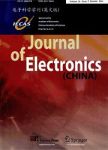MONTE CARLO SIMULATION FOR MODELING THE EFFECT OF GROUND SEGMENT LOCATION ON IN-ORBIT RESPONSIVENESS OF LEO SUNSYNCHRONOUS SATELLITES
MONTE CARLO SIMULATION FOR MODELING THE EFFECT OF GROUND SEGMENT LOCATION ON IN-ORBIT RESPONSIVENESS OF LEO SUNSYNCHRONOUS SATELLITES作者机构:Faculty of New Technologies Engineering-Shahid Beheshti UniversityG.C.***TehranIran
出 版 物:《Journal of Electronics(China)》 (电子科学学刊(英文版))
年 卷 期:2011年第28卷第2期
页 面:239-248页
学科分类:08[工学] 080401[工学-精密仪器及机械] 081105[工学-导航、制导与控制] 0804[工学-仪器科学与技术] 0825[工学-航空宇航科学与技术] 0811[工学-控制科学与工程]
基 金:Supported by the Research Council of Shahid Beheshti University G. C
主 题:Ground segment location In-orbit responsiveness Sunsynchronous satellite
摘 要:Responsiveness is a challenge for space systems to sustain competitive advantage over al-ternate non-spaceborne *** a satellite in its operational orbit,in-orbit responsiveness is defined as the capability of the satellite to respond to a given demand in a timely *** this paper,it is shown that Average Wait Time(AWT) to pick up user demand from ground segment is the ap-propriate metric to evaluate the effect of ground segment location on in-orbit responsiveness of Low Earth Orbit(LEO) sunsynchronous *** metric depends on pattern of ground segment access to satellite and distribution of user demands in time domain.A mathematical model is presented to determine pattern of ground segment access to satellite and concept of cumulative distribution function is used to simulate distribution of user demands for markets with different total demand *** Carlo simulations are employed to take account of uncertainty in distribution and total volume of user *** error and standard deviation are used to ensure validity of AWT metric obtained from Monte Carlo *** of the proposed metric in the ground segment site location process results in more responsive satellite systems which,in turn,lead to greater customer satisfaction levels and attractiveness of spaceborne systems for different ***,simula-tion results for a case study are presented.



